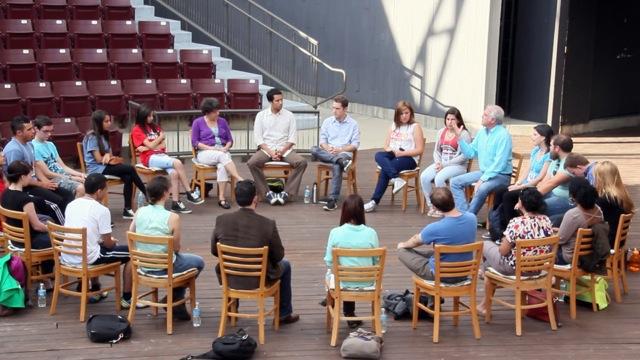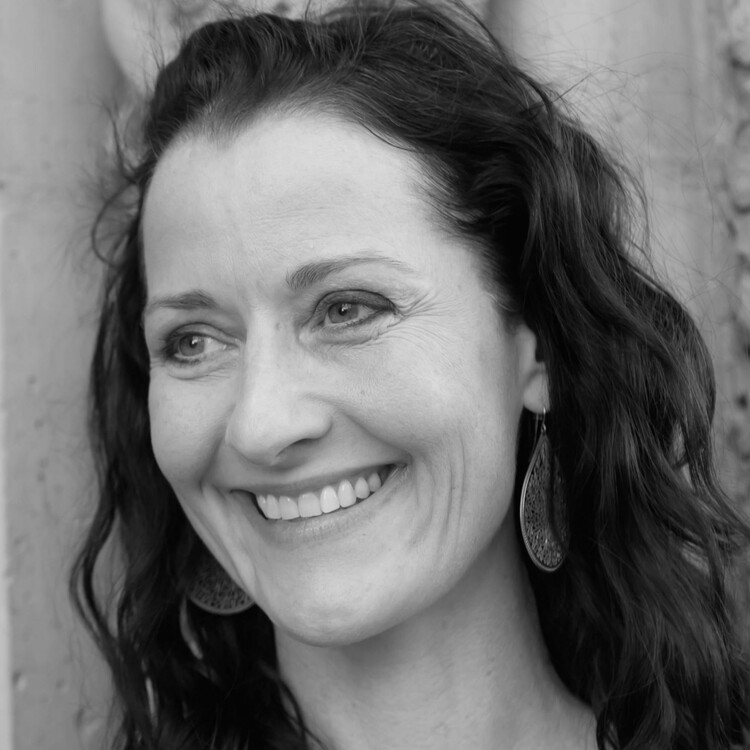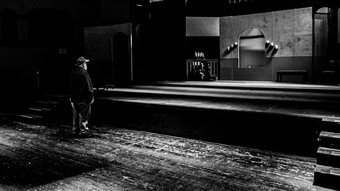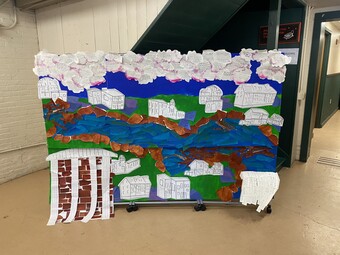Stories, Human Flourishing, and Spaces of Abundance
This week we’re publishing new writing and multimedia about the twenty-one-year artistic collaboration between Pregones Theater and Roadside Theater. The collaboration bridges two vast geographies and cultures, Puerto Rican and Appalachian, and two distinct aesthetics. Our series explores the creation of BETSY!, a musical about a Bronx Jazz singer and performer uncovering the secrets of her family’s history. Join us for discussion with artists and scholars about creating works of art that probe beyond clichés into the frayed ends of American pluralism. —Jamie Haft and Arnaldo J. López
As a community cultural development specialist I am super curious about how arts and culture build stronger communities. In the essay opening this series, Jamie Haft and Arnaldo López note, “Plays, and the artistic experience in general, are an underutilized resource for creating knowledge.” I would argue that theatre companies like Pregones and Roadside are themselves underutilized resources. Each company builds collective efficacy for themselves and their expanding community networks. Sociologists define “collective efficacy” as a group’s belief-in and ability-to collaborate to accomplish “stuff.”
Collaborations don’t just happen; they take work, hard work, which is why the twenty-one-year collaboration between Pregones and Roadside is such a fascinating model of collective efficacy. Dudley Cocke described the ten-year process of developing BETSY! by saying:
It began as a one-person play based on a lot of research by long-time Roadside ensemble member Ron Short about how his own people got here from Ireland. We took that down to Nashville and legendary jazz pianist Beegie Adair said, "I want to put my story in there." Then, we took that new story to the Bronx and Pregones said, "We see some of our story in here." That's the way the play has been building. People said, "We've got a little purchase on this," so it's a fun development for us.
The transparency and extensive documentation of BETSY! highlights how multiple cycles of development grow from stories and people’s real human connections to those stories, as well as circular moments of telling and listening. We can see the hard work of building collective efficacy grown from the ground up and rooted in community narratives.
People need stories. We build our lives in nests of stories. Stories we tell ourselves about our selves. Stories reside at the heart of both companies’ understanding of how they add value to their multiple communities. Cocke writes:
Effective grassroots organizing around issues of social justice invariably begins small. The basic unit of such organizing is the individual discovering through experience, reflection, and study his or her own truth of the issue, then testing and developing that truth in dialogue with others who also have knowledge. Aggregate and organize this knowledge about an issue and a movement for change can develop. Such a movement can only be sustained when this grassroots process of individual and collective learning continues to inspire and shape awareness and action.
And, in an essay published by NALAC, López quotes Jorge Merced of Pregones:
Having casa propia means we keep on testing and retooling the fabric of our work, adding new plays to the repertory, and raising the bar as artists. It also means sustained dialogue with our audience and other artists—turning the place into a home, together, in the communion of art.
Pregones and Roadside understand how stories build homes and social places for human flourishing. In this way, Pregones and Roadside develop plays and artists but they also develop abundant communities through their focus on the narrative wealth of a community, community efficacy, and community meaning-making. In Abundant Community: Awakening the Power of Families and Neighborhoods, John McKnight and Peter Block use “abundance” to redefine human flourishing, defining an abundant community as one with a “culture of community capacity, connection, and care.” Comparing and contrasting the social stories available through a consumer economy versus those drawn from an abundant community, they note principles of an abundant community:
- What we have is enough. [...] We do not need to operate on the half-full glass of scarcity to give value to things or qualities.
- We have the capacity to provide what we need in the face of the human condition. [...] We can imagine creating together a future beyond this moment. We can learn how to make visible and harvest what up to now has been invisible and treated as though it were scarce.
- We organize our world in a context of cooperation and satisfaction. We do not need competition to motivate our children or ourselves.
- We live with the reality of the human condition. […] Sorrow, aging, illness, celebration, fallibility, failure, misfortune, and joy are natural and inevitable. Life is not a problem to be solved or services to be obtained.
Human flourishing does not function as a zero-sum game or a set of inputs for defined outputs (x + y = happiness). A focus on flourishing grows from understanding communities as sites of plenty, not sets of risks. Pregones and Roadside are partners and even catalysts, framing their communities as spaces of power.
Humans create community moment-to-moment through symbolic and social interactions. When humans come together and are present with one another, we create what in The Human Condition philosopher Hannah Arendt calls the “space of appearance.” We “appear” to one another not as objects but as actors, as agents. We manifest the complex and unpredictable web of human relationships through and in our interactions. Communities depend on symbolic exploration and collaborative meaning-making experiences to understand themselves as communities. I believe that ensemble theatre and performance uniquely engages the spaces of being human, or these spaces of appearance. In this way, art is necessary, not frivolous, and inherently performs functions other development actions cannot. Which is why Pregones and Roadside are undervalued development resources.

How the companies define community adapts and grows, too. In the BETSY! Scholars Circle, Pregones and Roadside are “Developing content with scholars, not just for scholars.” Using the same engagement techniques with the Circle that the companies use with their local communities, they are building reciprocal relationships and sharing stories in expanding circles. As López described:
The Scholars Circle is about connecting archive documentation, communications, and social media with higher education. It's a rich and growing aspect of the work that we do as a community-based organization and an arts organization. And it's an organic bridge that we're looking to strengthen through relationships with folks who are working in university and their students.
Structurally, the Scholars Circle builds capacities in the field as a whole. As the companies invite a field-wide audience into the development process they create resources expanding how the field understands publics. The collaborative process builds abundance and develops field-flourishing as well as expanding collective efficacy.
In a recent essay in the Chronicle of Higher Education, Mark Greif called for public intellectuals to:
[…] participate in making "the public" more brilliant, more skeptical, more disobedient, more capable of self-defense, and more dangerous again—dangerous to elites, and dangerous to stability; when it comes to education, dangerous to the idea that universities should be for the rich, rather than the public, and hostile to the creeping sense that American universities should be for the global rich rather than the local or nationally bounded polity.
Theatre companies like Pregones and Roadside function as public intellectuals and cultural development institutions. Their focus on stories, on connections, on the messy reality of the human condition and U.S. American ideologies of self and other don’t offer easy answers. But they move in a space of abundance in the communion of art.











Comments
The article is just the start of the conversation—we want to know what you think about this subject, too! HowlRound is a space for knowledge-sharing, and we welcome spirited, thoughtful, and on-topic dialogue. Find our full comments policy here